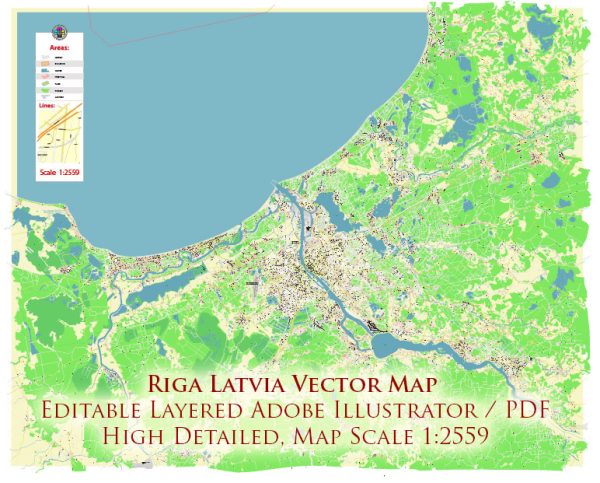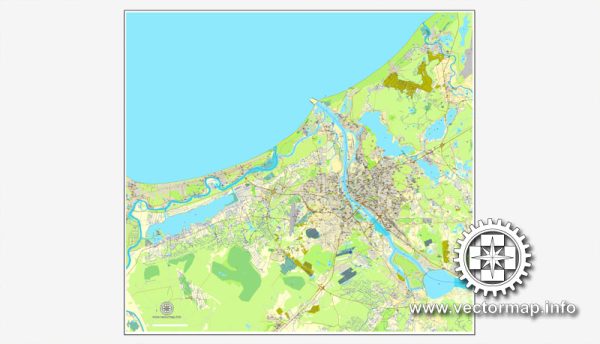Riga, the capital city of Latvia, is renowned for its rich architectural heritage, which reflects a diverse history spanning centuries. The architecture in Riga is a unique blend of various styles, showcasing the city’s historical and cultural influences. Here is a brief description of the architectural styles and features that you can find in Riga:
- Medieval Architecture: Riga’s Old Town (Vecrīga) is a UNESCO World Heritage site and a prime example of medieval architecture. The area is characterized by narrow, cobblestone streets, colorful Hanseatic-style buildings with gabled roofs, and Gothic elements. The iconic Riga Cathedral, dating back to the 13th century, is a prominent medieval landmark.
- Art Nouveau (Jugendstil): Riga is often called the “Art Nouveau Capital of Europe.” In the late 19th and early 20th centuries, Art Nouveau architecture flourished in the city. Elaborate facades with intricate floral and figurative ornamentation, asymmetrical designs, and curved lines are hallmarks of this style. Prominent architects like Mikhail Eisenstein and Konstantīns Pēkšēns contributed to Riga’s Art Nouveau legacy.
- Baroque and Rococo: Riga also boasts several Baroque and Rococo-style buildings, often found in churches and palaces. These structures are characterized by elaborate ornamentation, stucco work, and richly decorated interiors. Examples include St. Peter’s Church and the Rundāle Palace located just outside the city.
- Soviet-era Architecture: During the Soviet period, Riga, like many other Eastern European cities, saw the construction of functional and often imposing concrete and steel buildings. These structures can be found in various parts of the city and provide a glimpse into the architecture of that era.
- Modern and Contemporary Architecture: Riga has witnessed a resurgence of modern and contemporary architectural designs in recent years. The city now features a mix of glass-clad skyscrapers, innovative residential buildings, and revitalized industrial spaces, adding a modern touch to the urban landscape.
- Wooden Architecture: Outside the Old Town, you can find neighborhoods with traditional wooden houses, which offer a contrast to the more grandiose architectural styles. These houses often have decorative wooden elements and vibrant paint colors.
Riga’s architecture is a testament to the city’s resilience, having endured various historical events and transitions. The diverse range of architectural styles creates a unique and visually captivating cityscape that attracts both tourists and architectural enthusiasts. Whether you’re interested in medieval charm, Art Nouveau extravagance, or modern design, Riga offers a delightful experience for anyone interested in architecture.



 Author: Kirill Shrayber, Ph.D.
Author: Kirill Shrayber, Ph.D.